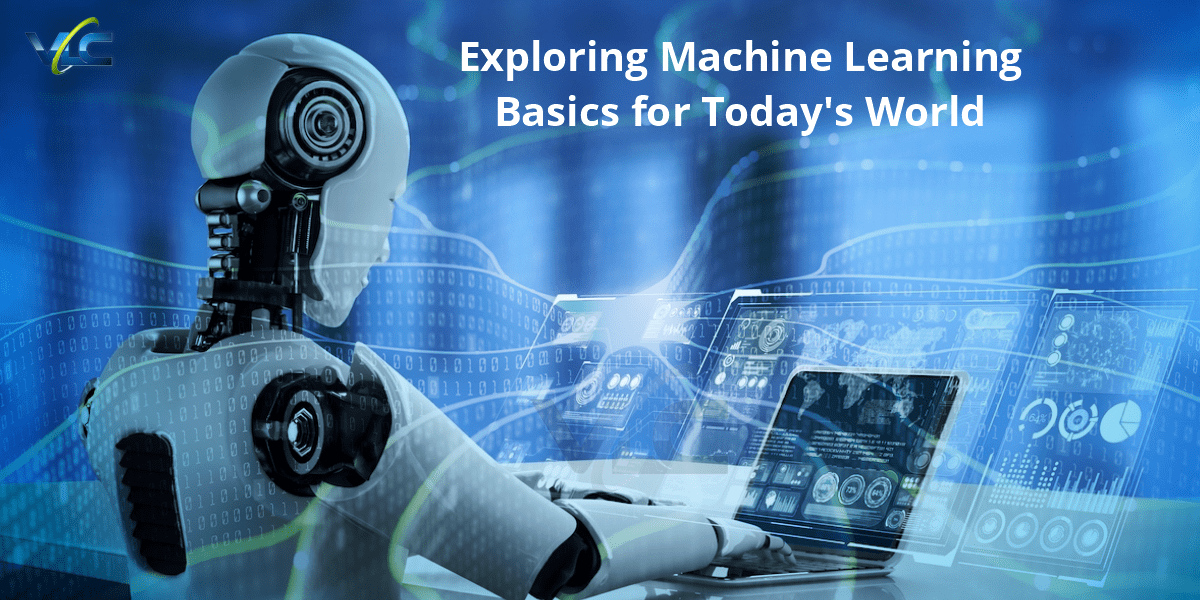Exploring Machine Learning Basics for Today’s World
The current tech-driven world has machine learning (ML) everywhere. It powers the personalized suggestions on your favorite streaming service and helps self-driving cars navigate busy streets. But what exactly is ML, and how does it work? In this article, we’ll break down the core principles of ML in simple terms, giving you a clear understanding of this groundbreaking technology and its relevance in our everyday lives. Let’s dive in!
Understanding Machine Learning
The essence of machine learning is nothing but a part of artificial intelligence (AI) that helps in teaching computers to learn from data and make decisions without being explicitly programmed. In other words, it’s about building algorithms that can interpret data, determine patterns, and make projections or decisions based on those patterns.
The Three Types of Machine Learning
There are three important types of machine learning: supervised learning, unsupervised learning, and reinforcement learning.
- Supervised Learning: In supervised learning, the algorithm is trained on a labeled dataset, where each input is associated with a corresponding output. The aim is to understand mapping from inputs to outputs so that the algorithm can make valid predictions on new, unseen data.
- Unsupervised Learning: Unsupervised learning, on the other hand, involves teaching the algorithm on an unlabeled dataset. The aim is to find hidden patterns or formats in the data without any predefined tags. Clustering and dimensionality reduction are common tasks in unsupervised learning.
- Reinforcement Learning: Reinforcement learning is a bit different. Here, the algorithm learns by engaging with an ecosystem and receiving feedback in the way of rewards or penalties. The goal is to learn a policy that maximizes the cumulative reward over time, leading to optimal decision-making.
The Role of Data in Machine Learning
Data is the lifeblood of machine learning. Without high-quality data, machine learning algorithms would be unable to learn and make accurate predictions. That’s why data pre-processing, cleaning, and feature engineering are needed steps in the machine learning channel.
The Importance of Algorithms
Algorithms serve as the driving force behind machine learning, powering its capabilities. A diverse range of algorithms exists, each tailored to specific tasks and data types. Among the plethora of machine learning algorithms, notable ones include linear regression, decision trees, support vector machines, and neural networks.
Evaluation and Validation
Once a machine learning model has been readied, it needs to be assessed and validated to ensure its enactment. In this procedure, the data is initially divided into training and testing sets. Subsequently, the model is trained using the training set, followed by an assessment of its performance on the testing set. Performance evaluation typically involves utilizing metrics such as accuracy, precision, recall, and F1 score to gauge the effectiveness of the model.
Challenges and Limitations
While machine learning has shown remarkable promise in a wide range of applications, it’s not without its challenges and limitations. Some common challenges include overfitting, underfitting, data scarcity, and biased datasets. Machine learning practitioners need to be conscious of these challenges and take steps to mitigate them.
Real-World Applications
Machine learning is being deployed in a huge spectrum of sectors and applications, from healthcare and finance to marketing and entertainment. Some common applications include image recognition, natural language processing, recommendation systems, and autonomous vehicles.
Conclusion: Embracing the Future
Machine learning is a wonderful technology with the capacity to revolutionize our world. By understanding the core principles behind machine learning, we can discover its full potential and use its capabilities to solve complex problems and drive innovation. Whether you’re a seasoned machine learning practitioner or just starting, there’s never been a better time to dive into the exciting world of machine learning.
